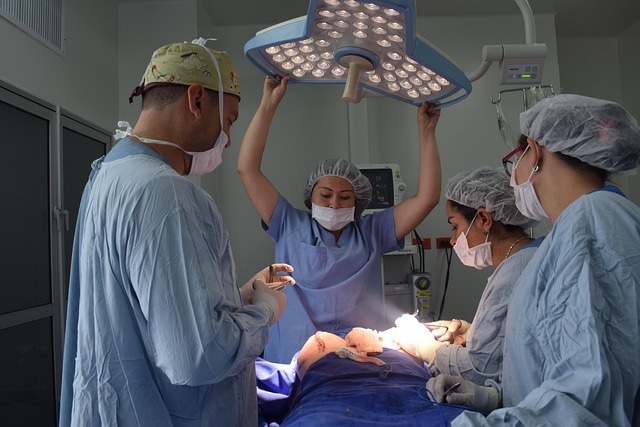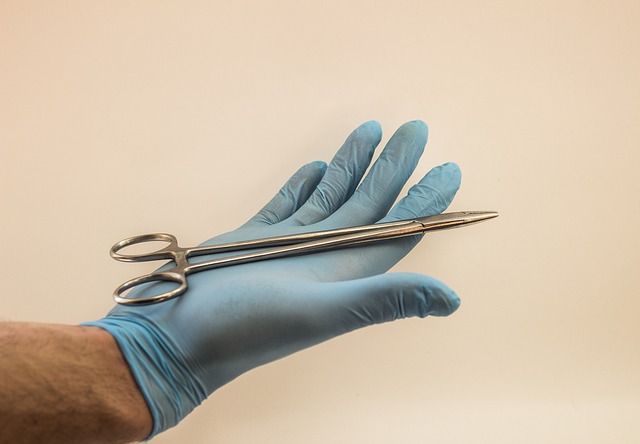Cosmetic surgery, while offering transformative results, carries significant risks and potential liabilities. Patients may file claims due to unwanted outcomes, complications, or permanent damage, alleging medical malpractice, negligence, equipment failure, or inadequate informed consent. Comprehensive cosmetic surgery liability coverage is essential for protecting practices and staff from financial strain, enabling them to navigate legal issues, maintain high standards, and focus on patient care. This includes key components like medical malpractice, professional liability, and legal expense coverage. Adequate insurance planning mitigates risks, ensures compliance, and demonstrates a commitment to providing high-quality care, safeguarding both surgeons and patients from financial disasters and reputational damage.
In the competitive landscape of plastic surgery, ensuring comprehensive cosmetic surgery liability coverage is paramount. This article delves into the intricate web of cosmetic surgery liability, highlighting the risks and potential claims that can arise in this specialized field. We explore the significance of adequate insurance for surgeons, dissect key components of a robust policy, and navigate various coverage types, from general to professional liability. Real-world case studies are presented, offering valuable insights into risk mitigation strategies to protect your practice.
- Understanding Cosmetic Surgery Liability: Risks and Potential Claims
- The Importance of Adequate Insurance Coverage for Plastic Surgeons
- Key Components of a Comprehensive Cosmetic Surgery Liability Policy
- Navigating Different Types of Coverage: General Liability, Professional Liability, and More
- Case Studies: Real-World Examples of Cosmetic Surgery Liability Claims
- Strategies for Mitigating Risks and Maximizing Protection for Your Practice
Understanding Cosmetic Surgery Liability: Risks and Potential Claims

Cosmetic surgery, while offering transformative benefits, comes with its share of risks and potential liabilities. Practices must be aware that patients can file claims related to procedures gone awry, including unwanted outcomes, complications, or even worse, permanent damage. These claims can range from allegations of medical malpractice to negligence in patient care, equipment failure, or inadequate informed consent.
Having comprehensive cosmetic surgery liability coverage is crucial for protecting practices and their staff. Such insurance policies mitigate financial risks by providing legal defense and compensation if a claim is successful. They ensure that practices can navigate these complex legal issues without facing significant financial strain, allowing them to focus on patient care and maintaining high standards in the industry.
The Importance of Adequate Insurance Coverage for Plastic Surgeons

Plastic surgeons play a critical role in enhancing and restoring the physical appearance of their patients, often using advanced techniques and technologies. With this level of expertise comes significant liability, making adequate insurance coverage indispensable. Cosmetic surgery liability coverage protects both the surgeon and the patient by mitigating risks associated with procedures that have inherent complexities and potential for adverse outcomes.
Without sufficient insurance, plastic surgeons face financial burdens from lawsuits and settlements, which can be substantial. This is especially true given the increasing demand for cosmetic procedures and the high stakes involved in transforming a person’s appearance. Therefore, obtaining comprehensive liability coverage becomes an essential step for any reputable plastic surgery practice, ensuring that patients receive the care they need with peace of mind and surgeons are shielded from potential financial disasters.
Key Components of a Comprehensive Cosmetic Surgery Liability Policy

In crafting a comprehensive cosmetic surgery liability policy, several key components are essential to ensure adequate protection for plastic surgery practices. Firstly, medical malpractice insurance is paramount, providing financial safeguarding against claims of negligence, such as incorrect procedures or inadequate care, which can lead to significant legal and financial repercussions. This coverage acts as a shield, protecting the practice from costly lawsuits and settlement fees.
Additionally, professional liability insurance is crucial for addressing claims related to errors in diagnosis, treatment plans, or post-operative care. Such policies extend coverage for medical mistakes, ensuring the practice is shielded against potential demands for compensation. Moreover, including coverage for legal expenses, like court costs and attorney fees, is beneficial as it facilitates a robust defense strategy when facing a lawsuit. This comprehensive approach to liability coverage empowers plastic surgery practices with the security needed to focus on providing exceptional patient care.
Navigating Different Types of Coverage: General Liability, Professional Liability, and More

Navigating different types of coverage is a crucial step for plastic surgery practices, as it directly impacts their financial protection and patient safety. General Liability insurance covers claims related to property damage or personal injury during regular practice operations. This is essential for any medical facility, ensuring they can manage unexpected incidents without significant financial strain. For specialized procedures like cosmetic surgery, Professional Liability (also known as Malpractice) coverage becomes paramount. It protects against allegations of negligence or errors in diagnosis and treatment, which are especially pertinent in the high-stakes field of plastic surgery.
In addition to these core coverages, practices might consider additional policies tailored to address specific risks. This could include coverage for medical malpractice lawsuits, as well as policies that protect against data breaches and cyber attacks, given the sensitive nature of patient information handled in plastic surgery practices. Such comprehensive insurance planning ensures that the practice not only complies with legal requirements but also demonstrates a commitment to providing the highest level of care to its patients.
Case Studies: Real-World Examples of Cosmetic Surgery Liability Claims

In the realm of cosmetic surgery, where procedures aim to enhance physical attributes, it’s crucial to acknowledge that not all outcomes are positive. Case studies from real-world scenarios highlight potential risks and complications associated with cosmetic surgeries, underscoring the significance of adequate liability coverage for practices. These examples serve as a stark reminder that even seemingly routine procedures can lead to unforeseen issues, including infection, scarring, and adverse reactions to anesthesia.
One notable case involves a patient who underwent a breast augmentation procedure. Post-surgery, they experienced severe pain and developed an infection in the implanted area. The patient filed a liability claim, arguing that the surgeon’s negligence in post-operative care led to their discomfort and additional medical expenses. This scenario underscores the importance of comprehensive cosmetic surgery liability coverage, which can protect practices from financial burdens associated with such claims.
Strategies for Mitigating Risks and Maximizing Protection for Your Practice

In the realm of cosmetic surgery, mitigating risks and ensuring comprehensive protection is paramount for any successful practice. The nature of plastic surgery procedures demands a meticulous approach to risk management due to potential complications, patient expectations, and legal vulnerabilities. One of the primary strategies involves securing adequate cosmetic surgery liability coverage. This specialized insurance protects against claims arising from surgical errors, adverse reactions, or dissatisfaction with outcomes. By investing in robust liability coverage, practices can safeguard their financial stability and maintain a positive reputation.
Additionally, establishing rigorous protocols and procedures is essential. Implementing detailed consent forms that outline risks, benefits, and alternatives for each procedure ensures transparency and reduces the likelihood of disputes. Regular staff training and ongoing medical education keep professionals apprised of best practices and emerging techniques, minimizing errors. A culture of safety and adherence to ethical standards not only protects patients but also strengthens the practice’s defense against potential liabilities.
